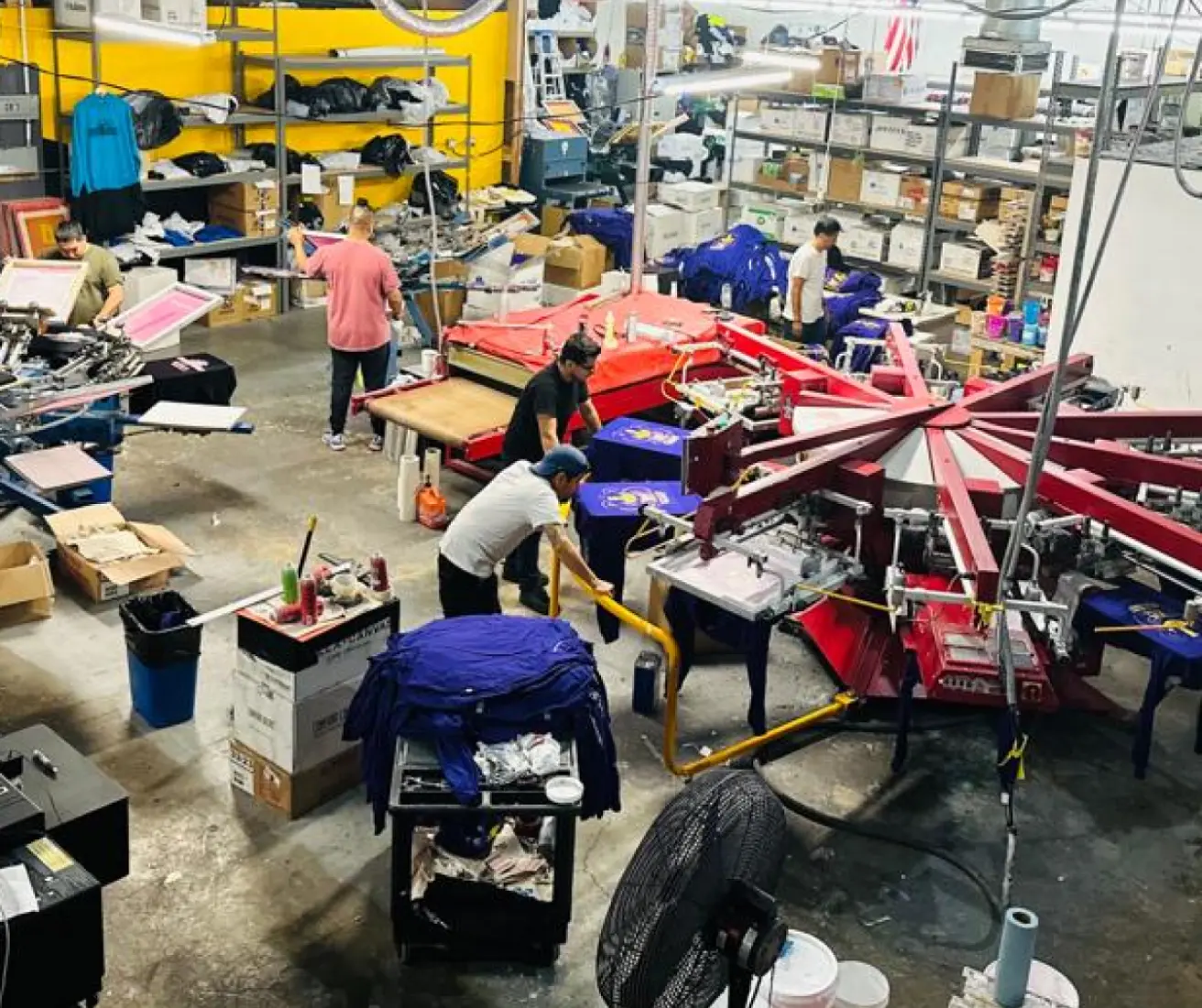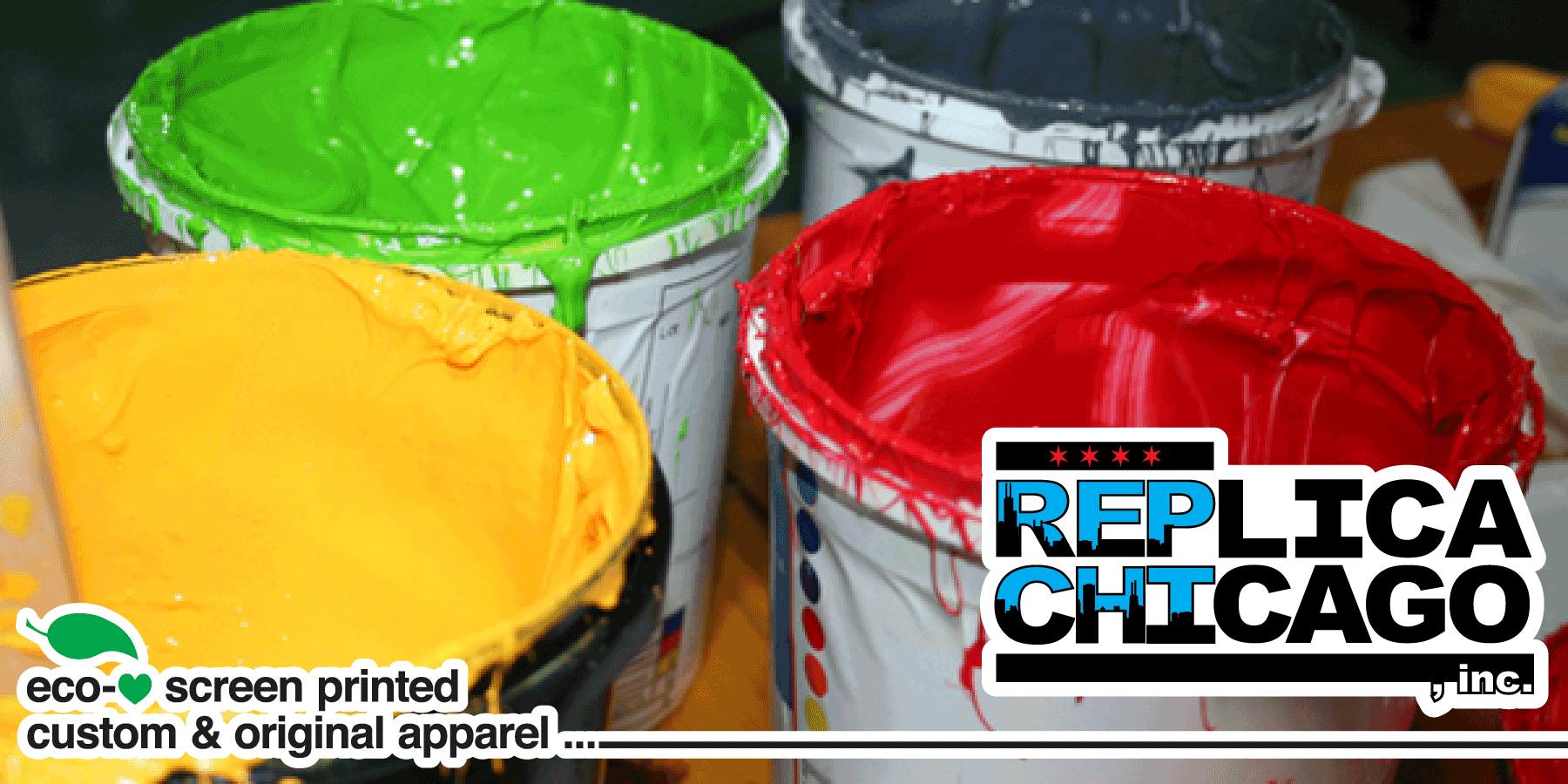Vintage Style Silk Screen Printing for Retro Fashion
Vintage Style Silk Screen Printing for Retro Fashion
Blog Article
Display Printing Uncovered: Every Little Thing You Need to Find Out About Tee Shirt and Garment Printing Techniques
If you've ever before asked yourself just how those vibrant styles wind up on your preferred tee shirts, you're in the right place. Screen printing is an interesting technique that incorporates art with technique, offering endless possibilities for creative thinking. Understanding the fundamentals, from devices to ink selections, can significantly impact your outcomes. Ready to check out the important elements that make screen publishing an art form? Allow's uncover the information that can boost your jobs.
The Essentials of Screen Printing: How It Functions
When you dive into display printing, you'll find it's both an art and a science. At its core, display printing includes creating a pattern, or screen, that permits ink to travel through only in specific locations (screen printing kit). You start by choosing your layout and preparing your screen with a light-sensitive solution. Once you subject this solution to light, it sets, leaving your design as an adverse room.
Setting the display over the material, after that make use of a squeegee to push ink through the screen onto the garment. Each step is important, and understanding them will boost your screen printing skills, changing straightforward garments right into special, expressive items.
Kinds of Display Printing Techniques
When you realize the fundamentals of display printing, it's time to explore the numerous strategies that can raise your layouts. One prominent method is conventional screen printing, where ink is pressed through a stenciled display. This strategy is great for strong, lively colors. There's water-based ink printing, which uses a softer feel and is eco-friendly, but it requires a various method to treating.
Another option is plastisol printing, understood for its durability and vibrant colors, making it a preferred for several brands. Experiment with halftone printing to create slope results and elaborate designs.
Essential Tools for Screen Printing
To attain magnificent lead to display printing, having the best tools is basic. First, you'll require a sturdy screen printing frame, which holds the mesh that moves your design onto the garment. Next, spend in high-grade squeegees; these are important for using ink uniformly throughout the screen. You'll also need a great direct exposure unit to produce your displays, in addition to a washout cubicle for cleansing them after use. A reliable heat resource, like a conveyor dryer or warmth press, is vital for treating your prints to ensure long life. Don't forget an appropriate work space, outfitted with tables and storage for your supplies. Lastly, safety equipment, such as masks and gloves, will keep you secure from chemicals and inks. With the right devices, you'll be well on your means to producing professional-quality prints.
Picking the Right Inks and Products
When selecting inks and products for screen printing, you require to consider the kind of ink that works best for your job. Think of fabric compatibility to ensure your layouts look last and terrific long. Check out green ink options to make your printing process more lasting.
Sorts Of Screen Inks
Selecting the right display ink is vital for attaining dynamic, durable prints that satisfy your task's needs. There are a number of kinds of screen inks to examine. Specialty inks, such as glow-in-the-dark or metal, can add distinct results to your layouts.

Textile Compatibility Factors To Consider
Understanding textile compatibility is vital for attaining high-grade display prints, particularly because different materials respond distinctly to various inks. When picking inks, take into consideration the textile kind-- cotton, polyester, or blends. For cotton, water-based inks function well, offering soft qualities and breathability. Polyester, on the various other hand, commonly needs plastisol inks for far better bond and lively shades. You could require to utilize a combination of both kinds if you're publishing on blends. Constantly evaluate your inks on example textile to guarantee they stick appropriately and keep color stability. In addition, remember that fabric weight and appearance can impact the final result, so selecting the best ink and material combination is important for your job's success.
Eco-Friendly Ink Options
Green inks are becoming a preferred choice for display printers who want to minimize their environmental influence while preserving high quality. When choosing inks, think about water-based inks, which are less dangerous and easier to cleanse up compared to standard solvents.
Furthermore, search for inks made from sustainable resources, such as soy or vegetable-based options. By choosing the best inks and materials, you'll not just create sensational layouts yet also add to an extra lasting printing process. Make the switch, and your prints will reflect your dedication to the setting!
Preparing Your Style for Screen Printing

Submit Layout Requirements
To ensure your design looks sharp and lively on fabric, you'll need to pay close focus to file style needs for screen printing. Make certain your style has a transparent history to prevent unwanted white sides on your prints. Maintain color settings in mind; CMYK is typical for screen printing, so convert your RGB makes as necessary.
Shade Splitting Up Strategies
Shade splitting up is an important action in preparing your design for display printing, and understanding it can substantially enhance your print quality. You'll require to damage your style into specific colors, as each color requires a separate display throughout printing. This precision not just assures exact color representation yet likewise enhances the printing procedure.
Resolution and Dimension
Attaining the finest results in screen printing starts with ensuring your layout has the best resolution and size. Ideally, your artwork needs to go to least 300 DPI (dots per inch) for sharp, clear prints. If you utilize reduced resolution, your end product could look pixelated and unprofessional.
When it pertains to size, take into consideration the dimensions image source of your print location. Layout your artwork to match the last print dimension, ideally producing it in the real dimensions you'll be publishing. This means, you'll prevent any unexpected scaling issues.
Constantly check your style in both vector and raster styles. Vector graphics can be scaled without shedding Learn More Here quality, making them excellent for screen printing. Preparing appropriately will guarantee your design looks fantastic on every garment!
Step-by-Step Screen Printing Process
Display printing is a vibrant procedure that permits you to produce vibrant styles on different surface areas. To obtain started, you'll need a screen, emulsion, and your picked ink.
Put ink onto the screen and make use of a squeegee to push the ink through the pattern onto the material. Lift the display thoroughly and let the print dry. You've efficiently screen printed your style.
Tips for Effective Display Printing Projects
While you're diving into your display printing tasks, bear in mind that preparation is key to success. Start by collecting all your materials-- inks, displays, mops, and garments. A clean workspace helps protect against unwanted mistakes, so clean up before you begin.
Following, validate your artwork is high-resolution and correctly sized for your garment. Check your screen for correct exposure and tidy it thoroughly to avoid smudges. When blending your inks, comply with the producer's guidelines to accomplish the appropriate uniformity.
Throughout printing, apply also stress with your squeegee for constant results. Don't hurry; take your time to confirm each print satisfies your criteria. After printing, allow your garments dry totally prior to managing or packaging them.
Finally, always keep a sample of your benefit future reference. This way, you can evaluate your progression and enhance your methods over time. Pleased printing!

Regularly Asked Concerns
For how long Does It Require To Set up a Display Printing Job?
Establishing up a display printing work go generally takes around half an hour to an hour. You'll prepare the displays, mix inks, and adjust journalism. The moment varies based upon complexity and experience, so stay organized!
Can I Print on Different Material Enters Utilizing the Very Same Technique?
Yes, you can print on various material kinds utilizing the same method, but you'll need to readjust your inks and setups. Some textiles absorb ink differently, so experimenting warranties the most effective results for each and every material.
What Are Common Mistakes to Avoid in Screen Printing?
When screen printing, avoid typical blunders like utilizing the incorrect ink, neglecting proper exposure times, or skipping pre-press checks. Always evaluate your configuration and preserve clean screens to ensure top quality outcomes each time.
How Can I Effectively Tidy and Preserve My Screen Printing Devices?
To properly clean and maintain your display printing tools, you should regularly wash screens with ideal solvents, inspect mops for wear, and ensure all tools are saved dust-free and dry. Uniformity protects against expensive repair services and improves efficiency.
Is Screen Printing Ecologically Pleasant Compared to Various Other Techniques?
Display printing can be a lot more eco-friendly than other techniques, specifically if you make use of eco-conscious materials and water-based inks. By picking lasting materials and methods, you minimize waste and reduce your influence on the planet.
Screen Printing Uncovered: Whatever You Need to Know Regarding Tee Shirt and Garment Printing Methods
At its core, screen printing entails creating a pattern, or screen, that enables ink to pass with just in specific areas. Setting the display over the material, after that utilize a squeegee to push ink with the display onto the garment. One preferred method is traditional display printing, where ink is pushed through a stenciled display.When choosing inks and materials for screen printing, you require to take right into account the kind of ink that works ideal for your task.
Report this page